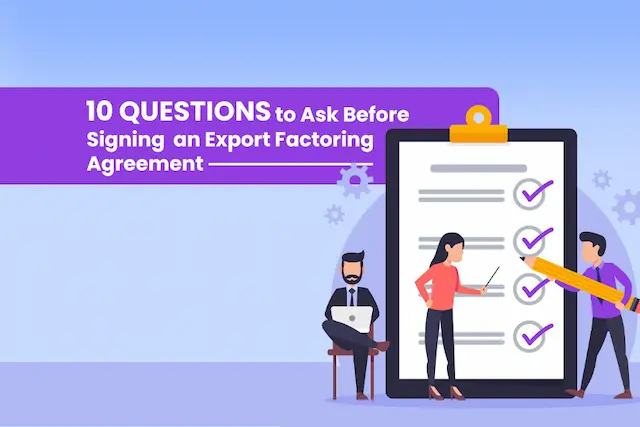The Union Budget of 2025 sent a message to Indian exporters. Global competitiveness and ease of doing business are the first national priorities. With the launch of a new Export Promotion Mission, the government is coordinating incentives and reforms in policy and institutional arrangements to boost Indian trade. For small and medium exporters, awareness of these developments will not only be profitable but vital for long-term growth.
Let us take out the main takeaways from the budget and what it means for Indian exporters in 2025 and beyond.
A Mission Focused on Export-Led Growth
The announcement of the Export Promotion Mission is the turning point for trade strategy in India. Unlike the previous schemes that were too narrowly defined, centred on incentives, this mission is holistic, aiming to boost infrastructure, bring compliance ease, enable digital adoption, and even support exporters at all the turns of the supply chain.
The goal is clear: improve India’s share of the global export by streamlining the system, speeding it up, and making it more scalable.
More Credit Support for MSMEs
The significant aspect of Budget 2025 is an extension of credit support for MSME exporters. The government has been recommending the doubling of allocation under the Credit Linked Capital Subsidy Scheme (CLCSS) and Interest Equalisation.
This will ease access to inexpensive working capital to small exporters, thus enabling them to meet their international orders away from liquidity constraints. In addition to that, exclusive credit windows are being introduced for women-led export businesses and first-time exporters, and the doors are open for more inclusive trade participation.
Upgraded Trade Infrastructure
Enhanced logistics continues to be part of the pillars of the Export Promotion Mission. Budget 2025 will see more funding for port connectivity, export hubs, and the modernisation of customs. The government plans to bring down the average turnaround time for container clearance by 30%, improving the efficiency of the supply chains.
For exporters of perishables or high-volume goods, this emphasis on physical infrastructure and digital integration can bring down logistics costs and order cycle times by a great deal.
Digital India Goes Global
The government’s answer to red tape is digitalisation. The Budget is proposing an improved unified trade portal that is aimed at streamlining documentation, customs filing, and accessing trade finance.
This will enable the exporters to monitor, manage, and make an application for export-related services on a single dashboard, thus saving time for moving from one government portal to the other. This step demonstrates India’s effort to digitise and streamline the trade function.
Sustainability and ESG Incentives
Identifying the global trends, the budget contains measures aimed at supporting exporters to align with the sustainability goals. There is a new Green Export Credit framework, which is meant to encourage exporters to embrace an eco-friendly way of producing.
Additional credit support and fast-track approvals are received by companies that meet the ESG (Environmental, Social, and Governance) benchmarks. This shift is just in time, particularly for the exporters who aim at markets in Europe and North America, which now require proof of sustainable sourcing.
Focus on FTAs and Market Diversification
India’s newest Free Trade Agreements (FTAs) with the countries in Southeast Asia, Africa, and Europe are also promised by the Export Promotion Mission to be put into full use. Budget 2025 provides for more funds to the export promotion councils to advise exporters on how to explore these newer markets.
The government has also suggested new trade offices in Mexico, Kenya, and Vietnam to ensure the diversification of exports outside the traditional markets of the U.S. and the UAE.
Capacity Building for Exporters
Another progressive step taken is the budgetary allocation for skill development and programs that will make the country export-ready. Examples of these are digital training on e-commerce exports, information campaigns on global quality standards, and assistance on product branding.
These programs are to be rolled out in local languages and customized for the first-time exporters, primarily from tier-2/tier-3 cities.
Export Readiness Checklist for 2025
To take maximum advantage of the provisions of the Budget 2025, exporters need to ask themselves the following questions:
- Is my enterprise in the new database of the DGFT?
- Am I eligible for the interest subvention schemes under the revised Export Credit support?
- Have I mapped out potential demand in FTA-enabling markets?
- Are my products ESG-compliant, or do they qualify for green financing?
- Did I enrol my team in capacity-building programs for international compliance?
This checklist helps in the practical application of bringing in line business goals and policy change.
A Promising Window for Exporters
Budget 2025 is not about mere financial planning – it is a strategic change to the export-led development. Export Promotion Mission gives more financing, simplified compliance, and enhanced international access to exporters. With strong digital infrastructure, new routes for trading, and assistance to green exports, Indian businesses have a better foundation to grow. However, being informed is not enough. Exporters must move fast to remain competitive in a changing world economy-adapting to policy differences, venturing into new markets, and upgrading their trade readiness.
The export landscape is dynamic, and the ability to access finance promptly may be complex. Credlix eases working capital access through invoice discounting, where one doesn’t need collateral for their loans. Whether you are trying to scale your operations or deal with a large volume export order, Credlix ensures that your payment is quick, compliant & GST compliant. Learn about smarter export finance today, through Credlix.





